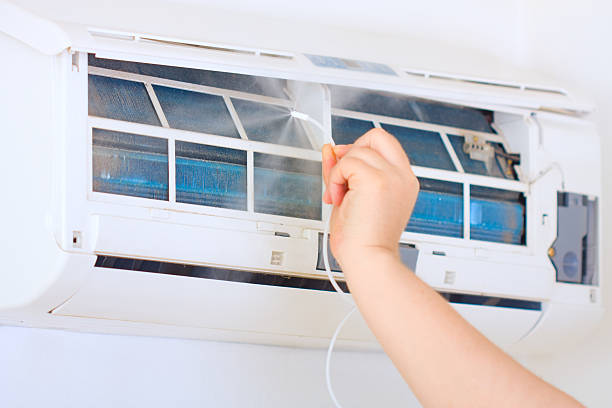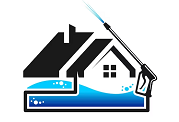Maximizing Efficiency in Home Pressure Washing Projects
Ready to rev up your home pressure washing projects? Look no further for tips on maximizing efficiency! Pressure washing can be a breeze with the right know-how. From choosing the perfect pressure washer to tackling hard-to-reach spots, this guide has got you covered.
No need to stress or waste time – we’ll help you power through the dirt and grime to achieve a spotless result. With a little prep and the correct technique, you’ll have your surfaces shining like new.
And don’t forget the post-washing maintenance to keep everything looking pristine. Get ready to unleash the power of pressure washing and make your home sparkle!
Key Takeaways
– Choose the right pressure washer for your specific cleaning needs and surface types
– Prepare the surface properly before pressure washing by clearing obstacles and pre-treating stains
– Use the correct pressure washing technique by selecting the right nozzle, maintaining a consistent distance, and working systematically

– Clean hard-to-reach areas effectively using extension wands, telescoping brushes, rotating nozzles, surface cleaner attachments, and gutter cleaning attachments
Choosing the Right Pressure Washer
To choose the right pressure washer for your home projects, consider the specific cleaning needs and surface types you’ll be working with. Different pressure washers have varying levels of power, measured in pounds per square inch (PSI), and gallons per minute (GPM).
For light-duty tasks like cleaning patio furniture or small decks, a pressure washer with a PSI of 1,200 to 1,500 and a GPM of 1.2 to 1.4 should suffice.
On the other hand, if you plan on tackling more heavy-duty jobs like removing stubborn stains from concrete or washing large driveways, a pressure washer with a higher PSI, ideally around 2,200 to 3,000, and a GPM of 2.2 to 2.5 would be more suitable.
Another factor to consider is the surface type you’ll be cleaning. Some pressure washers come with adjustable nozzles or interchangeable tips that allow you to customize the spray pattern and pressure intensity. This is particularly useful when dealing with delicate surfaces like wood or glass. For these surfaces, using a wider spray pattern and lower pressure is recommended to prevent any damage.
Preparing the Surface for Pressure Washing
Prepare the surface by removing any loose debris before pressure washing. This step is crucial to ensure that the pressure washer can effectively clean the surface.
Here are some tips to help you prepare the surface for pressure washing:
– Sweep the area: Start by sweeping the surface to remove any loose dirt, leaves, or debris. This will prevent them from clogging the pressure washer and affecting its performance.
– Clear the area: Remove any obstacles, such as furniture, plants, or outdoor decorations, from the area you plan to pressure wash. This will make it easier to access and clean the entire surface.
– Protect delicate items: If there are delicate items nearby, like glass windows or fragile plants, cover them with plastic or move them to a safe location. This will prevent any accidental damage during the pressure washing process.
– Wet the surface: Before using the pressure washer, wet the surface with water. This will help loosen stubborn dirt and make the cleaning process more efficient.
– Pre-treat stains: If there are stubborn stains on the surface, consider using a pre-treatment solution or detergent to help break them down. Apply the solution and let it sit for a few minutes before pressure washing.
Using the Correct Pressure Washing Technique
After properly preparing the surface, you can now focus on using the correct pressure washing technique to achieve optimal results. When it comes to pressure washing, technique is key.
First, it’s important to choose the right nozzle for the job. The nozzle determines the water pressure and spray pattern, so selecting the appropriate one will ensure efficient cleaning.
Next, maintain a consistent distance between the nozzle and the surface being cleaned. Holding the nozzle too close can cause damage, while holding it too far may result in ineffective cleaning.
To avoid streaks and uneven cleaning, move the nozzle in a side-to-side motion, overlapping each pass. This ensures that every inch of the surface is thoroughly cleaned.
Additionally, it’s crucial to work systematically, starting from the top and working your way down. This allows the dirty water and debris to flow downward, preventing recontamination of previously cleaned areas.
Remember to always follow the manufacturer’s instructions for your pressure washer and take breaks if needed to prevent overheating.
Cleaning Hard-to-Reach Areas
Clean those hard-to-reach areas efficiently by using specialized tools and techniques. When pressure washing your home, it’s important to tackle every nook and cranny to ensure a thorough clean. Here are some tips to help you clean those hard-to-reach areas effectively:
– Use extension wands: These attachments can extend the reach of your pressure washer wand, allowing you to clean high areas such as roofs and gutters without the need for ladders or scaffolding.
– Invest in a telescoping brush: This handy tool can help you clean windows, siding, and other surfaces that are difficult to reach. The telescoping feature allows you to adjust the length to suit your needs.
– Utilize rotating nozzles: These specialized nozzles provide a wide cleaning area and can reach tight corners and crevices with ease. They’re particularly useful for cleaning decks, fences, and other textured surfaces.
– Try a surface cleaner attachment: Designed for cleaning large flat surfaces, these attachments can be attached to your pressure washer and make quick work of driveways, patios, and sidewalks.
– Use a gutter cleaning attachment: This tool allows you to clean gutters from the ground, eliminating the need for ladders. It uses high-pressure water to remove debris and keep your gutters flowing freely.
Post-Washing Maintenance Tips
To maintain the results of your pressure washing project and keep your home looking its best, regular upkeep is essential. After completing the pressure washing, there are a few post-washing maintenance tips that you should follow.
First, make sure to inspect your home for any areas that may need touch-ups or repairs. Pressure washing can reveal hidden damage, such as cracks or loose paint. Addressing these issues promptly will prevent further damage and maintain the integrity of your home’s exterior.
Next, consider applying a fresh coat of paint or stain to protect and enhance the appearance of your home. Pressure washing can strip away old paint, leaving surfaces vulnerable to the elements. By applying a new coat, you can prolong the lifespan of your siding, deck, or fence.
Additionally, regularly cleaning your home’s exterior can help prevent the buildup of dirt, grime, and mold. Consider scheduling routine pressure washing sessions to keep your home looking clean and well-maintained.
Lastly, don’t forget to maintain your pressure washer itself. Clean the machine after each use and store it in a dry, secure location. Regular maintenance will ensure that your pressure washer continues to perform optimally and last longer.
Frequently Asked Questions
Can I Use a Pressure Washer to Clean Delicate Surfaces Like Wood or Glass?
You can use a pressure washer to clean delicate surfaces like wood or glass, but caution is needed. The high pressure can cause damage if not used correctly.
To prevent any mishaps, adjust the pressure to a lower setting and use a wide-angle spray nozzle. Also, keep the nozzle at a safe distance from the surface and avoid spraying directly at joints or seams.
Always test on a small inconspicuous area first to ensure no damage occurs.
How Often Should I Pressure Wash My Home’s Exterior?
You should pressure wash your home’s exterior at least once a year. This will help remove dirt, grime, and mold buildup that can accumulate over time.
However, if you live in an area with high humidity or near the ocean, you may need to pressure wash more frequently to prevent damage from salt and moisture.
Regular maintenance will keep your home looking clean and prevent potential damage in the long run.
Can I Use Regular Household Cleaning Products With My Pressure Washer?
Yes, you can use regular household cleaning products with your pressure washer.
However, it’s important to check the manufacturer’s instructions and guidelines to ensure that the cleaning products are suitable for use with a pressure washer.
Some cleaning products may not be compatible or could potentially damage the pressure washer.
It’s also a good idea to do a small test area first to make sure the cleaning solution doesn’t cause any adverse effects on the surface you’re cleaning.
Is It Necessary to Wear Protective Gear While Pressure Washing?
Is it necessary to wear protective gear while pressure washing?
Yes, it’s highly recommended. Pressure washers can generate high-pressure water streams that can cause injury.
To protect yourself, wear safety goggles to shield your eyes from debris and chemicals.
Additionally, gloves will prevent your hands from getting hurt.
Lastly, wearing non-slip shoes will help you maintain your balance and prevent accidents.
Prioritizing safety is essential to avoid any potential harm while pressure washing.
What Are the Potential Risks or Damages That Can Occur if Pressure Washing Is Done Incorrectly?
If pressure washing is done incorrectly, there can be potential risks and damages. Water can seep into cracks and cause damage to the structure or foundation of your home.
High-pressure water can also strip away paint, causing damage to the exterior surfaces. Additionally, using the wrong nozzle or improper technique can lead to injury or accidents.
It’s important to follow safety guidelines and use the correct equipment to minimize these risks and ensure a successful pressure washing project.
Conclusion
In conclusion, by choosing the right pressure washer, preparing the surface properly, and using the correct technique, you can maximize efficiency in your home pressure washing projects.
Additionally, cleaning hard-to-reach areas is important in achieving thorough results.
Furthermore, following post-washing maintenance tips will Continued help ensure long-lasting results.
So, grab your pressure washer and get ready to transform your outdoor spaces with ease and effectiveness.

Welcome to my website! My name is Tyler Hogan, and I am a professional Commercial Power Cleaning Project Manager. With years of experience in the industry, I have developed a deep passion for providing effective and efficient cleaning solutions for both residential and commercial properties.
